"How old would you be if you didn't know how old you are?" -Satchel Paige
Today marks another year and another trip around the Sun for me. For you, and me, and everything on Earth that makes it through another year on this world, there's a whole lot we get to experience.
Some things are tiny: the Earth's rotation slows by about two millionths of a second each year, while some are large: we hurtle over 900 million kilometers in outer space as we orbit around the Sun. Our Earth spins just over 366 times on its axis, while our one revolution around the Sun leaves us with 365 (and an occasional 366) days in a year.
But looking beyond the Earth, practically everything you can imagine in the Universe has undergone a lot in the last year you've been on Earth.
Every satellite we've put up, including the vaunted International Space Station, races around the Earth as we go about our daily lives. The low-Earth-orbit ones (like the ISS) race around the Earth at speeds around 17,000 miles-per-hour (27,000 km/hr), meaning that over the course of a year, they orbit the Earth around 6,000 times.
But while our Solar System is full of interesting facts and motions, everything I've mentioned and much, much more hurtles around the galaxy -- imperceptibly -- as the years unfold.
The entire Solar System speeds through the galaxy, traveling 7 billion kilometers each year in our Sun's journey through the galaxy's disk. But life goes on in the galaxy over that time, as gas clouds contract, forming new stars all the time.
Each year, around a million new stars about a Solar Mass's worth of stars (reference here) form in the galaxy, mostly in star forming regions like the Eagle Nebula, above. At the same time, stars in our galaxy burn out and die, but not quite at the same rate.
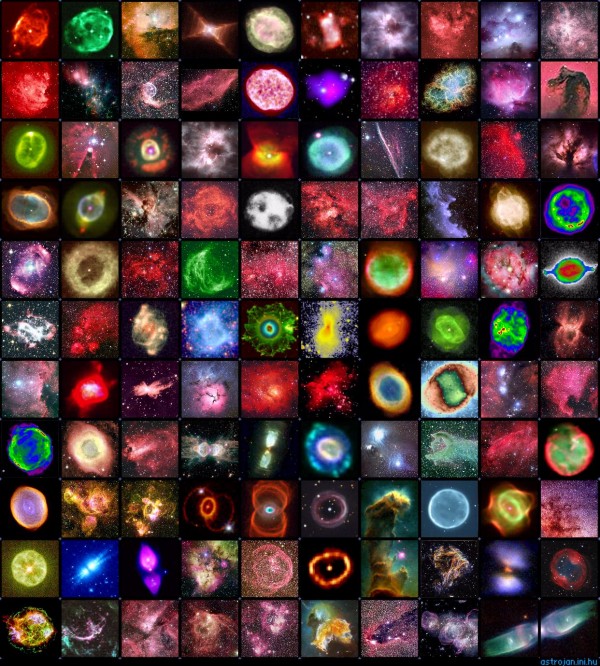
Image credit: http://astrojan.ini.hu/, retrieved from Margaret Hanson, U. of Cincinnati.
Stars die spectacularly throughout the galaxy, but the vast majority of stars we form have a lifetime that's far greater than the present age of the Universe. As a result -- even optimistically -- only dozens of stars die each millenium in our Milky Way, meaning that each year that passes marks an extra new star or so in every galaxy in the Universe.
And those galaxies, themselves, are different on this day than they were even a year ago.
The nearest large cluster of galaxies -- the Virgo Cluster, above -- has around 1,600 large, Milky Way-sized (or larger) galaxies in it, and lives just 53 million light years away. It's also speeding away from us at over 1,200 kilometers per second, meaning that each year that goes by sees that entire cluster wind up another 40 billion kilometers farther away from us.
In fact, if you lived to be 229, you would find this cluster an extra light year distant from us than when you were born. But that's for the closest cluster of galaxies to us; what about the farthest galaxy we've ever discovered?
The light from this galaxy -- found in the Hubble Ultra Deep Field -- took 13.1 billion years, or 96% of the age of the Universe, to reach us. But the Universe is expanding so quickly that each year that passes sees this galaxy more than two extra light years distant from us! Even if we launched a spaceship today at 99.999999999%+ the speed of light at this galaxy, it would never reach it. As each year passes, maybe 20 or so galaxies newly suffer this fate: that they become unreachable, even in theory, from our place in the Universe.
So happy birthday to me and everyone who shares another year on the planet with me, and may the Universe continue to amaze and educate us all.
- Log in to post comments

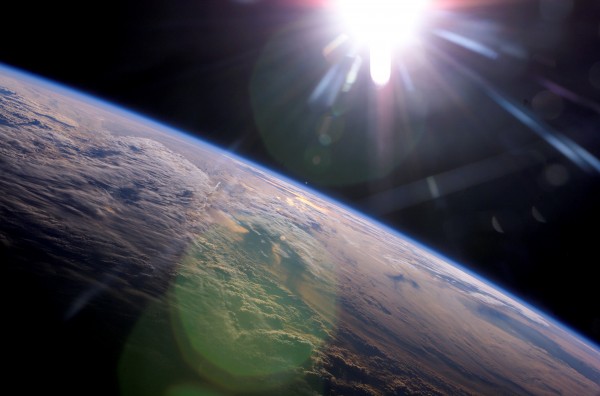
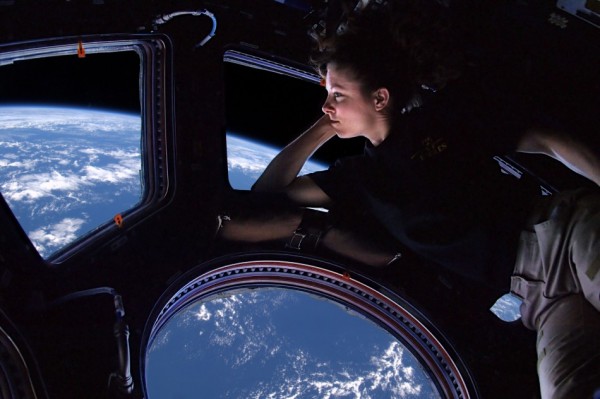
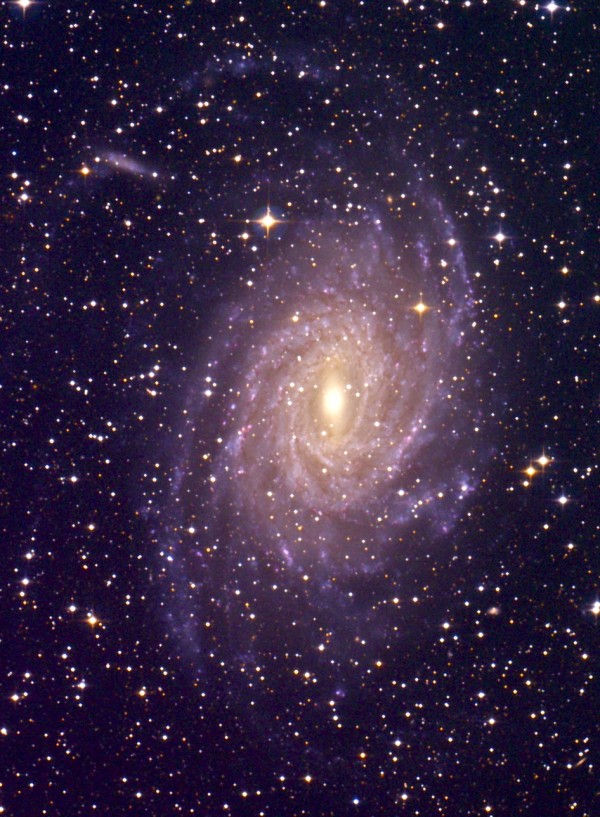
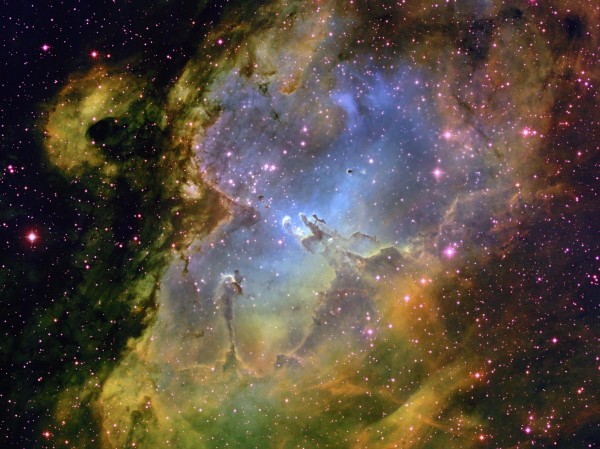
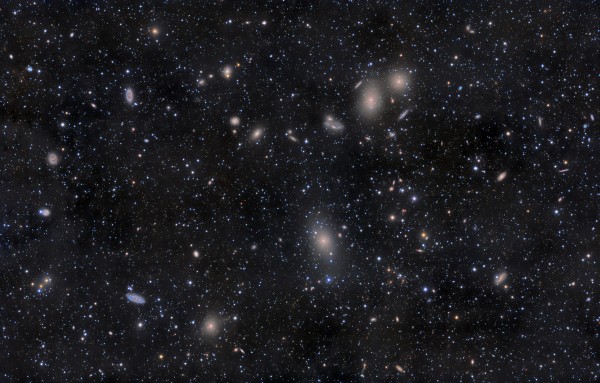
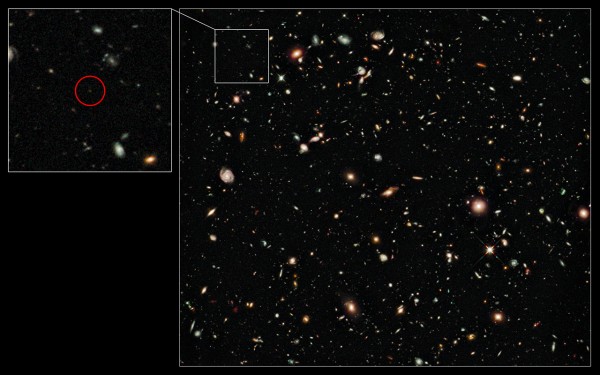




Happy birthday! If only more stars like YOU were born on our Earth... at least one a decade please?
Happy Birthday!
Happy B-day Ethan and all the best. Keep up the good work and live long and prosper! ;)
What can I say - You made many things much more understandable. And much more interesting for a layman. Thank You and keep up a good work.
Best regards.
PS Strange thing: 4 comments and another one from Poland :-) .
"...each year that passes sees this galaxy more than two extra light years distant from us!"
Does this mean that this galaxy is receding from us at twice the speed of light? If so, then how can we see it?
Did I miss something here?
Happy birthday! I hope it is a wonderful occasion.
:)
Happy birthday. And I'm as mystified as Jockaira (and an RAH fan)
I agree Jockaira,
I must have missed something too.
That implies that both our galaxy and this distant galaxy are relatively, each moving away from each other at faster than the speed of light.
Could someone please enlighten me?
Nice reflective blog though!
"Just remember that you're standing on a planet that's evolving; revolving at 900 miles an hour." - M. Python
Here's to one more time around for all of us!
Many more happy returns of the day.
Happy birthday, and best wishes for your next trip with the Earth around the sun!
(Aren't our galaxy and this distant galaxy apparently receding from each other at above the speed of light because the movement in part results from the distance between them increasing with the universal expansion of space? I know objects can't exceed the speed of light, but I believe the universe as a whole is exempt.)
Happy birthday, Ethan, and thank you for giving us this wonderful blog!
Happy birthday from this side of the planet.
I guess there was a time that those galaxies weren't moving so fast away, and the light that was emitted in our direction during that pre-faster-than-c-time is what we are observing now.
btw theoretically we could visit those Deep Field clusters in 25 human years, when we are onboard of a spaceship that constantly accelerates with 1G, due to time dilation. But sadly there seems to be that too weird expansion.
"If so, then how can we see it?"
An interesting phenomenon would be, if what I suggested in my previous comment is correct, that there will come a time that clusters start to disappear before our own eyes, zap, zap, zap, …
Happy Birthday Ethan! Hope you blew out all the candles on the cake and wished many more years of writing this wonderfully inspiring blog!
"each year that passes marks an extra million-or-so stars in every galaxy in the Universe."
But the Milky Way galaxy is 13.2 billion years old and only has 300 billion stars (i.e. 3 x 10^11 stars) 1.3 x 10^10 years x 10^6 stars /year = 1.3 x 10^16 stars. I assume there is a reason for this discrepancy.
This is a pretty impressive claim.
So the higher the z (i.e. redshift of a galaxy) the lower the number of stars in the galaxy.
Please point me to a reference.
Or... what am I misunderstanding?
"Even if we launched a spaceship today at 99.999999999%+ the speed of light at this galaxy, it would never reach it. (the farthest galaxy we’ve ever discovered)."
But the highest energy cosmic rays do not travel across the universe at a constant velocity. . they accelerate continuously (somehow) in their journey across the universe. Otherwise, they wouldn't exceed the GZK limit.
Likewise, a spacecraft with low initial velocity that is continuously accelerated by several g's can reach a more distant galaxy than one with an initial (and constant) velocity equal to "99.999999999%+ the speed of light ". As well an initial velocity equal to "99.999999999%+ the speed of light " implies an almost infinite instantaneous acceleration that would kill a human.
Well anyway this is how my spaceship is designed. Still, perhaps I misunderstand something? Let me know.
At any rate, you're still young Ethan. With proper accelleration you still can reach that most distant galaxy before your last birthday. Time dilation due to continuous gravitational accelleration of several g's is the ticket.
So happy birthday, live long as you enjoy and travel the universe.
Happy birthday Ethan. :)
From the pov of a photon, no time passes between the emissionand absorption. Therefore the universe was a set size. From our pov, the universe got bigger and therefore the ohoton got stretched to fit the same number of 'beats' in this longer path.
Thaks to Chelle for explaining Ethan's apparently impossible statement. This shows the value of determining exactly which space-time frame is being considered.
What I missed was that the light by which we see "this galaxy" has been in transit for billions of years and the actual motions of "this galaxy" are not in the same space-time frame as the light or our non-existant perceptions of "this galaxy".
Belatedly, I wish Ethan and everyone else here a Happy Birthday in whatever space-time frame it occurs.
Happy Birthday, Ethan!!!
I know, I missed the date, but, is it yet OK, isn't? ;-)
Jockaira,
Thanks for giving me some credit, but I don't know if my suggestion is correct, because there would be also an other odd thing, and that is the fact that the speed of gravitational waves is the same as the speed of light, so at a certain point Stars would start to be disconnected, because they do not only shines, they also pull .... how is this keeping it all together, are them waves being stretched, like how Wow says that "the photon got stretched"? Perhaps this is something that Ethan could explain in more detail in an extra topic.
You are giving us an excellent thing to read. Keep on with it, I enjoy reading it a lot.... Happy birthday.
Happy Birthday!!! I always enjoy seeing the photos that catch your learned eye.
Happy B'day Ethan.
OKThen, my mistake on the earlier statement on the galaxy's star formation rate. I mis-read a paper a while ago when they talked about a star formation rate as being about an Msun per year as being about a million suns, rather than being about one solar mass per year.
This has been fixed, and check back later today for a new post elaborating on it (with links).
تصاویر بسیار عالی است.واقعا شگفت انگیز و لذت بخشه.
The photoes are very wondeful.thank you
Great post. I came across this while searching for images of the sun from the space station. Surprisingly there are very few, and in the ones I can find the sun appears smaller than I imaged, seeing as its huge. Any thoughts?
Thanks for the post.